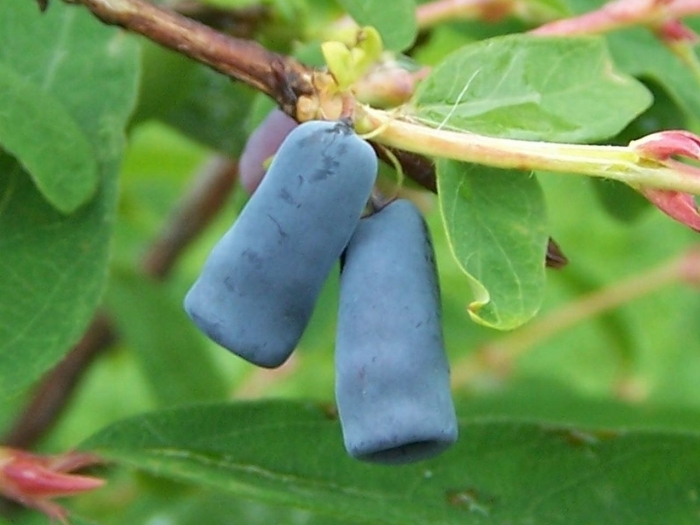Sweetberry Honeysuckle
(Lonicera caerulea)
Sweetberry Honeysuckle (Lonicera caerulea)
/
/

Opioła Jerzy (Poland)
CC BY 2.5























































Estimated Native Range
Summary
Sweetberry Honeysuckle is valued for its ornamental qualities, including its attractive flowers and edible berries. It is used in gardens for hedging, as a standalone specimen, or for wildlife gardens to attract birds. The plant is winter-hardy, tolerating extreme cold temperatures down to −47 °C (−53 °F), and its flowers are frost-tolerant, making it a resilient choice for northern climates. It thrives in full sun to part shade and prefers soils with slow to fast drainage. While it requires medium amounts of water, it is relatively low maintenance once established.CC BY-SA 4.0
Plant Description
- Plant Type: Shrub
- Height: 4-6 feet
- Width: 4-6 feet
- Growth Rate: Rapid
- Flower Color: Cream
- Flowering Season: Spring
- Leaf Retention: Deciduous
Growth Requirements
- Sun: Full Sun, Part Shade
- Water: Medium
- Drainage: Slow, Medium, Fast
Common Uses
Bee Garden, Bird Garden, Butterfly Garden, Deer Resistant, Edible*Disclaimer: Easyscape's listed plant edibility is for informational use. Always verify the safety and proper identification of any plant before consumption., Fragrant, Hedges, Hummingbird Garden, Low Maintenance, Street Planting
Natural Habitat
Cool temperate regions, boreal forests, and mountainous areas of Europe and Asia
Other Names
Common Names: Blue Honeysuckle, Fly Honeysuckle, Blue Fly-Honeysuckle, Blueberry Honeysuckle, Western Honeysuckle, Blaue Heckenkirsche, Sinikuusama, Camérisier Bleu, Chèvrefeuille Bleu, Chèvrefeuille À Fruits Bleus
Scientific Names: , Lonicera caerulea, Lonicera coerulea, Lonicera caerulea var. tangutica, Lonicera turczaninovii, Lonicera caerulea var. hirsuta, Chamaecerasus caerulea, Isika caerulea, Lonicera edulis var. turczaninovii,
GBIF Accepted Name: Lonicera caerulea L.